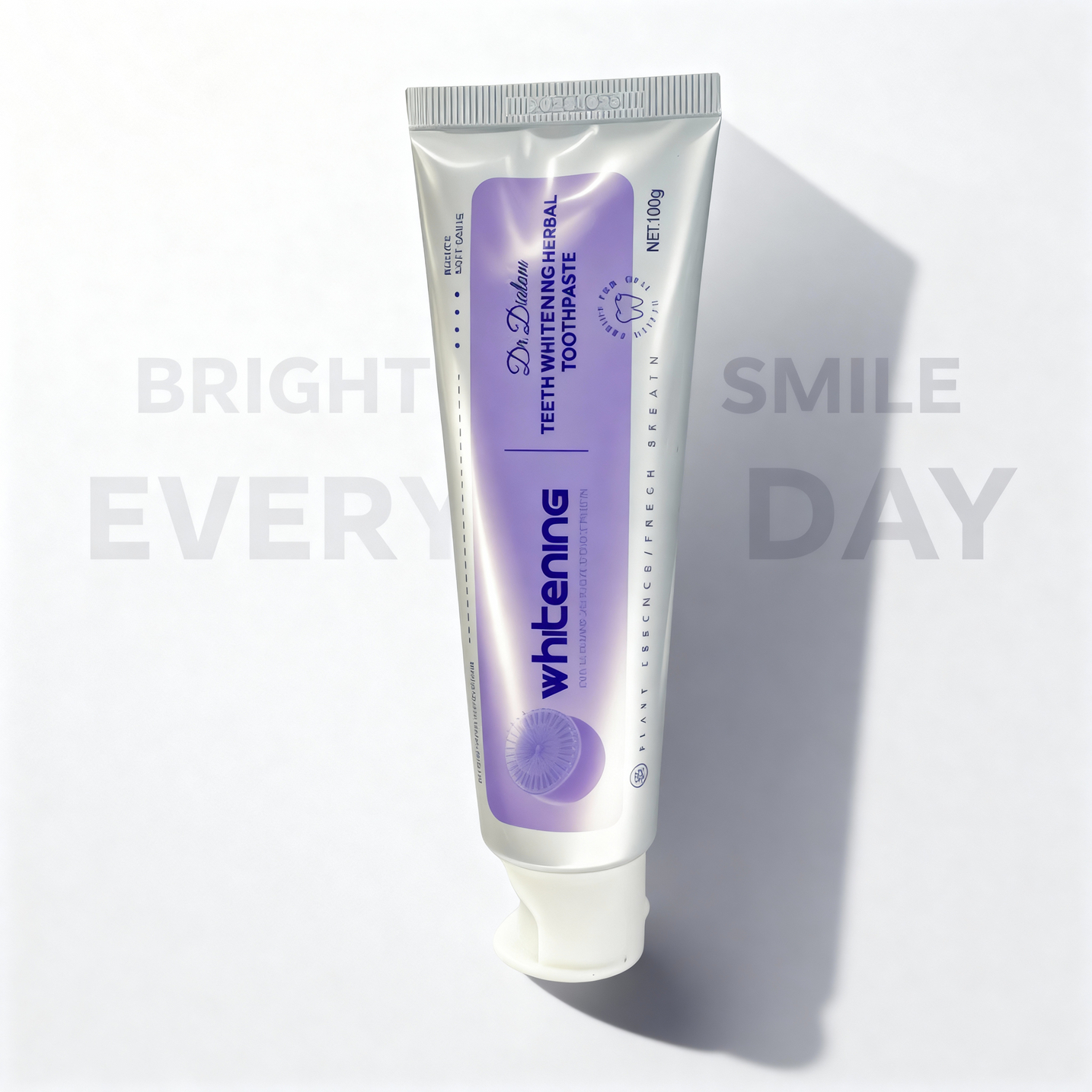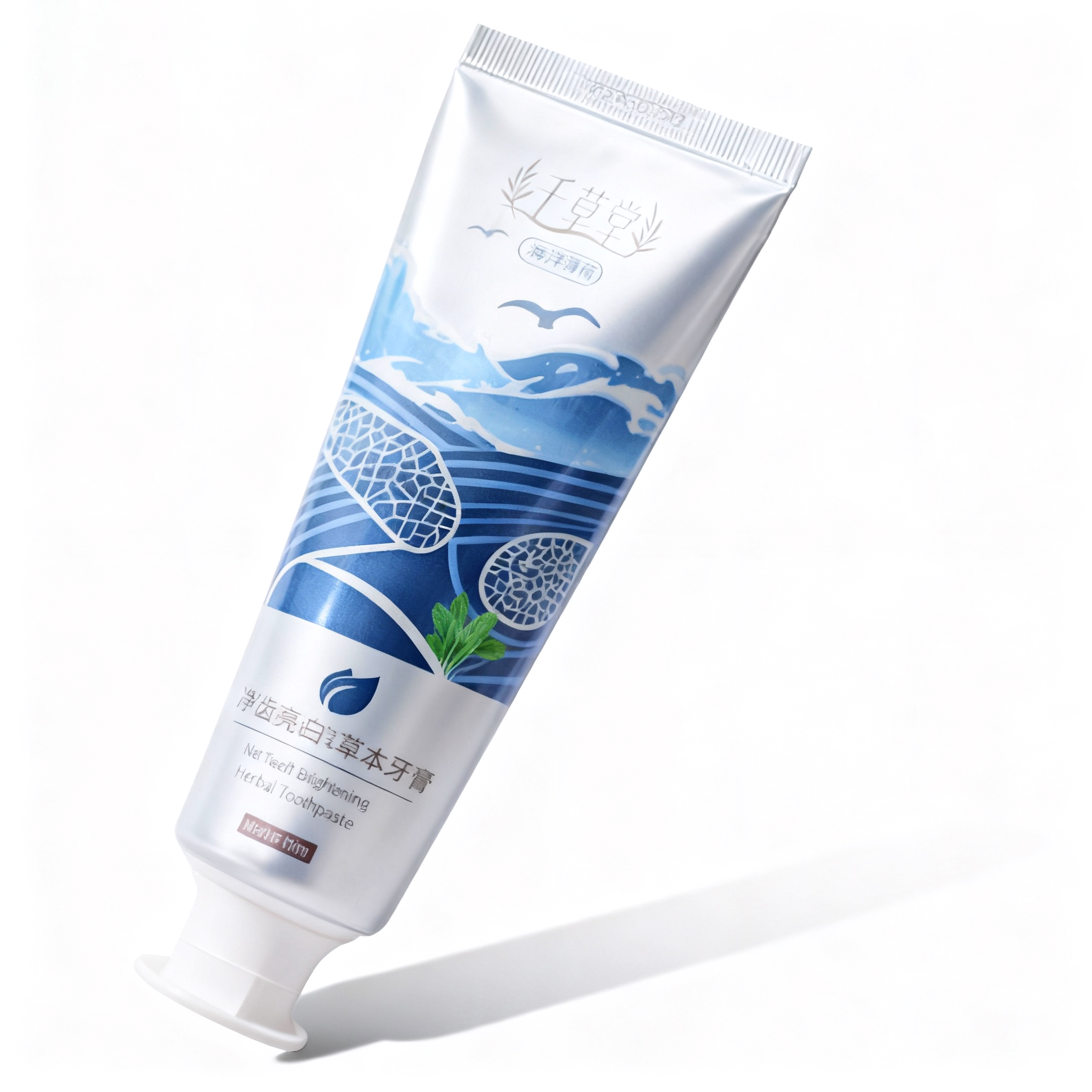
The Whitening Advantages of Diatoms
Scientific Analysis of the Whitening Mechanism of Diatoms
Mechanism of Diatom-Based Tooth Whitening
The whitening effect of diatoms in toothpaste primarily stems from the following mechanisms:
1. Physical Adsorption:
The porous structure of diatoms gives them strong adsorption capacity, allowing them to effectively absorb pigment molecules on the tooth surface.
Studies have shown that toothpastes containing diatomaceous earth of different particle sizes can effectively adsorb odor molecules such as indole and dimethyl sulfide. Among them, toothpaste containing 800-mesh diatomaceous earth exhibited the most significant adsorption ability.
This same mechanism applies to pigment molecules responsible for tooth discoloration, such as tea, coffee, and tobacco stains.
2. Micro-Polishing Effect:
Due to their unique structure, diatom particles provide gentle polishing during brushing. This helps remove surface stains and pigment deposits, restoring the natural whiteness of teeth.
Unlike harsh abrasives, this micro-polishing process does not damage the enamel but instead smooths the tooth surface, reducing future pigment adhesion.
3. Deep Cleaning through Porous Structure:
The porous nature of diatoms allows them not only to clean surface stains but also to penetrate micro-pores and fissures in the tooth enamel.
This enables the removal of deep-seated pigment deposits, achieving comprehensive whitening results that many conventional ingredients fail to deliver.
Comparison with Traditional Whitening Ingredients
1. Whitening Efficiency:
Studies indicate that diatom-based toothpaste demonstrates excellent stain removal capability.
In in-vitro stain removal experiments, diatom toothpaste outperformed conventional toothpaste in removing tea, coffee, and tobacco stains.
Specifically, the ΔE (color difference) values for diatom toothpaste were 12.09 (tea stains), 8.53 (coffee stains), and 30.29 (tobacco stains), all significantly higher than those of positive and negative control toothpastes.
By comparison, a whitening toothpaste containing 1% hydrogen peroxide achieved an average shade reduction of only 5.17 after four weeks of use.
Another study showed that toothpastes containing 0.75%, 1.50%, and 2.80% hydrogen peroxide all produced significant whitening effects compared to regular toothpaste, but there was no significant difference among concentrations.
This suggests that diatom-based formulations may be more effective in removing certain types of surface stains than low-concentration hydrogen peroxide.
2. Mechanistic Differences:
Traditional whitening agents such as hydrogen peroxide primarily rely on oxidation–reduction reactions to decompose pigment molecules—a chemical whitening process.
While effective, it can sometimes lead to tooth sensitivity, especially at higher concentrations (e.g., 25%).
In contrast, diatoms achieve whitening through physical mechanisms—adsorption and micro-polishing—making them a safer alternative that neither abrades enamel nor causes sensitivity.
3. Durability and Cumulative Effect:
The whitening effect of diatom toothpaste is progressive and long-lasting.
Studies show that whitening performance improves with continued use, and the effect persists over time.
Conversely, some chemical whitening agents produce faster initial results but can damage enamel with prolonged use, and their effects may diminish quickly.
4. Applicability:
Diatom-based toothpaste effectively removes a wide range of extrinsic stains—including those from tea, coffee, and tobacco—while certain traditional ingredients, such as hydrogen peroxide, show selective performance (e.g., more effective for tobacco and red wine stains, but less so for tea stains).
Clinical Evidence Supporting the Whitening Advantages of Diatoms
Multiple clinical studies confirm the superior whitening performance of diatom-containing toothpastes.
A randomized, double-blind clinical trial evaluating toothpastes with various hydrogen peroxide concentrations found that a 2.8% hydrogen peroxide formulation produced significant color changes after 12 weeks.
In contrast, another study revealed that toothpaste containing diatoms improved tooth brightness by 1–2 shade levels within four weeks, comparable to professional whitening treatments.
In a study focusing on extrinsic tooth stains, researchers compared diatom-based toothpaste with conventional whitening formulations.
After 28 days of use, diatom toothpaste achieved visible brightness enhancement, with superior removal of tea and coffee stains compared to chemically based products.
Conclusion
Analysis of diatom-based toothpaste reveals the following key advantages:
-
Multi-functional Whitening Mechanism: Achieved through physical adsorption (optimal performance at 800 mesh), micro-polishing (enamel-safe and anti-stain adhesion), and deep cleaning (penetrating micro-pores for stain removal).
-
Superior Whitening Efficiency: Demonstrated by significantly higher ΔE values for tea and coffee stains compared to traditional products.
-
Safety and Comfort: Physical whitening mechanism avoids sensitivity and enamel damage associated with chemical agents.
-
Cumulative and Long-Lasting Results: Whitening effect improves with continued use.
-
Broad Applicability: Effective across multiple types of extrinsic discoloration.
-
Clinically Proven Efficacy: Achieves 1–2 shade improvements within four weeks; 28-day trials show superior stain removal compared to chemical whitening agents.



